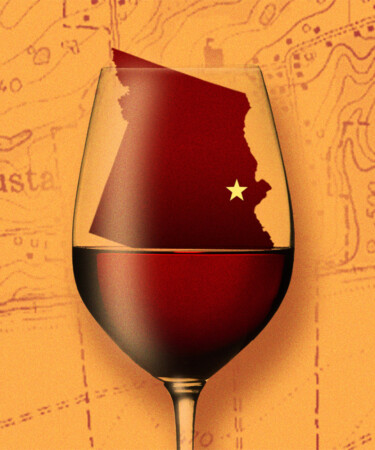For most wine enthusiasts, the first region that comes to mind when thinking of American wine is the iconic Napa Valley. While there is no doubt that Napa’s bold Cabernet Sauvignons and Chardonnays put the U.S. on the fine wine map, it was actually the second area to achieve official wine region status in the States. So, if not the world-renowned Napa Valley, what region gets the honor of forever being known as the U.S.’s first American Viticultural Area?
That would be Augusta, Mo. In 1980, the U.S. decided to implement a method to recognize specific wine regions, inspired by the successful designation of origin systems in Europe that protect special wine regions from being replicated by imposters. Hot off of the 1976 Judgement of Paris, Napa was the talk of the town, and regarded as a shoo-in for AVA status. However, it was Augusta’s rich history and distinct terroir that gave it an edge in the eyes of the Bureau of Alcohol, Tobacco and Firearms (now known as the TTB). Although it might not seem like it now, Augusta was once a thriving, innovative wine region, and its advancements contributed greatly to the world of wine as a whole — eventually earning it the first spot on America’s list of official regions.
Missouri’s roots in wine were planted around the 1830s, when the state welcomed an influx of German immigrants to the town of Hermann on the banks of the Missouri River. While the rocky soils were inhospitable for many crops, the German tradition of winemaking allowed the settlers to see the potential for vineyards in this area, so they started planting grapes for wine production. By the 1850s, the area was home to over 60 wineries that were producing 10,000 gallons of wine per year. Many people were struggling with famine back in Europe, and the successful harvests inspired thousands of other immigrants to come settle by the Missouri River. The area, which was lauded for its abundance of grapes, earned the name “New Rhineland.”
While the wineries in Missouri were thriving, another hardship hit Europe: phylloxera. In the late 1800s, this infamous root louse plagued European vineyards, almost completely decimating entire regions. At the time, much of the wine world panicked at the thought of this pest wiping out centuries of wine tradition and culture, as well as the potential for any future grapes to thrive in historic regions. The first sign of hope in the fight against phylloxera was actually brought about by C.V. Riley, Missouri’s first entomologist. Riley discovered that vines native to America were resistant to the louse. Upon this discovery, local Missouri winemakers sent millions of phylloxera-resistant rootstocks to Europe. The grafting of European vitis vinifera grapes to American rootstock is still how winemakers combat phylloxera to this day.
By the 1900s, Missouri had over 100 wineries and the state’s wines started to gain international recognition. Italian immigrants also swarmed to the region for its winemaking potential, and wineries were expanding down the river to the town of Augusta. It seemed like Missouri wine was unstoppable. But when the National Prohibition Act was passed in 1919, the region took a massive hit that it never fully recovered from. Wineries were shuttered, immigrants moved on to other professions, and the Missouri grape boom was over for the time being.
So, when the United States finally set out to crown its first official wine region over 60 years later, the rich history of Augusta grabbed its attention. However, to become an AVA, a region must also prove that it offers a distinct terroir that separates it from surrounding regions. Augusta managed to prove its worth in this respect as well, noting its ancient glacial soils and unique positioning between the high ridges of the Missouri River that lend to warmer winter temperatures.
Even though it might come as a shock that Augusta beat out Napa for the title of first AVA, the region truly does exemplify what is important in the U.S. AVA system, offering both a culturally significant history and distinct terroir. So if you have the chance, find a bottle of Cabernet Sauvignon, or even some Chambourcin, from Augusta and cheers to America’s first AVA.
